Juyu Xiao
Training Robust Spiking Neural Networks with ViewPoint Transform and SpatioTemporal Stretching
Mar 14, 2023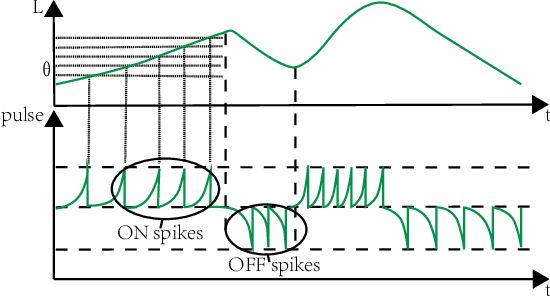
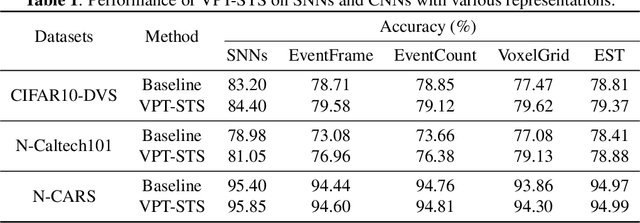
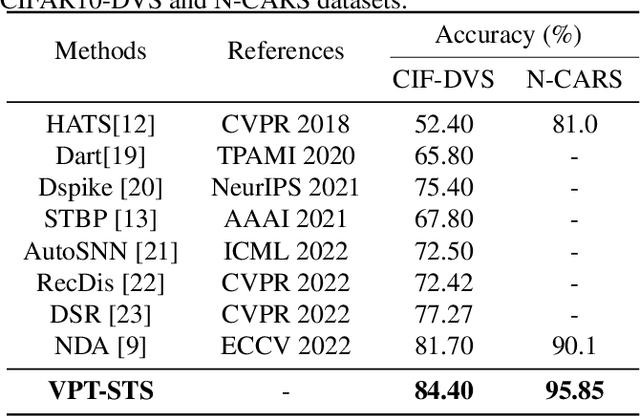

Abstract:Neuromorphic vision sensors (event cameras) simulate biological visual perception systems and have the advantages of high temporal resolution, less data redundancy, low power consumption, and large dynamic range. Since both events and spikes are modeled from neural signals, event cameras are inherently suitable for spiking neural networks (SNNs), which are considered promising models for artificial intelligence (AI) and theoretical neuroscience. However, the unconventional visual signals of these cameras pose a great challenge to the robustness of spiking neural networks. In this paper, we propose a novel data augmentation method, ViewPoint Transform and SpatioTemporal Stretching (VPT-STS). It improves the robustness of SNNs by transforming the rotation centers and angles in the spatiotemporal domain to generate samples from different viewpoints. Furthermore, we introduce the spatiotemporal stretching to avoid potential information loss in viewpoint transformation. Extensive experiments on prevailing neuromorphic datasets demonstrate that VPT-STS is broadly effective on multi-event representations and significantly outperforms pure spatial geometric transformations. Notably, the SNNs model with VPT-STS achieves a state-of-the-art accuracy of 84.4\% on the DVS-CIFAR10 dataset.
Modeling Associative Plasticity between Synapses to Enhance Learning of Spiking Neural Networks
Jul 24, 2022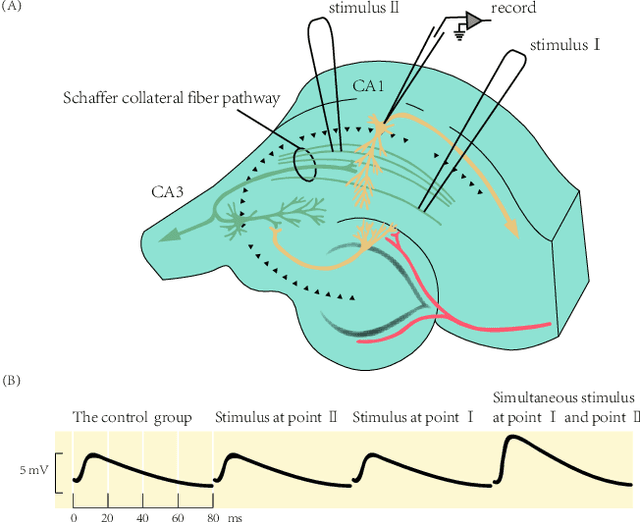
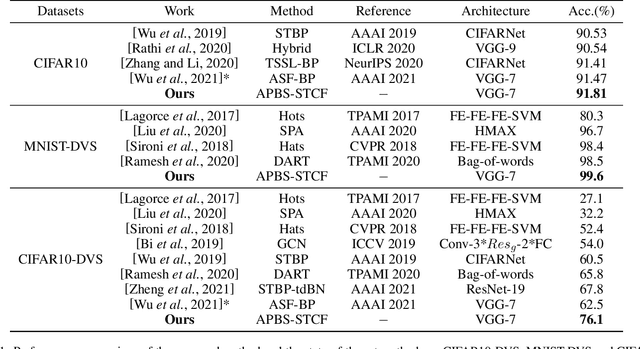
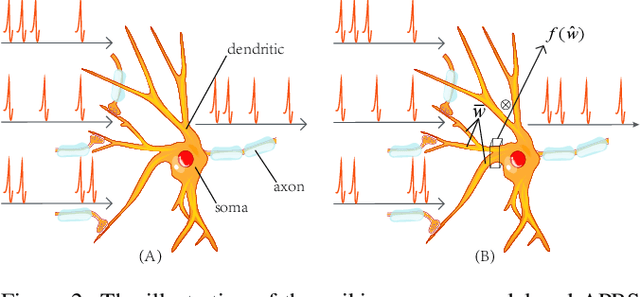

Abstract:Spiking Neural Networks (SNNs) are the third generation of artificial neural networks that enable energy-efficient implementation on neuromorphic hardware. However, the discrete transmission of spikes brings significant challenges to the robust and high-performance learning mechanism. Most existing works focus solely on learning between neurons but ignore the influence between synapses, resulting in a loss of robustness and accuracy. To address this problem, we propose a robust and effective learning mechanism by modeling the associative plasticity between synapses (APBS) observed from the physiological phenomenon of associative long-term potentiation (ALTP). With the proposed APBS method, synapses of the same neuron interact through a shared factor when concurrently stimulated by other neurons. In addition, we propose a spatiotemporal cropping and flipping (STCF) method to improve the generalization ability of our network. Extensive experiments demonstrate that our approaches achieve superior performance on static CIFAR-10 datasets and state-of-the-art performance on neuromorphic MNIST-DVS, CIFAR10-DVS datasets by a lightweight convolution network. To our best knowledge, this is the first time to explore a learning method between synapses and an extended approach for neuromorphic data.
Improved Regularization of Event-based Learning by Reversing and Drifting
Jul 24, 2022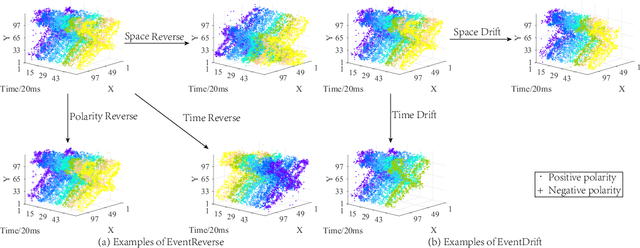

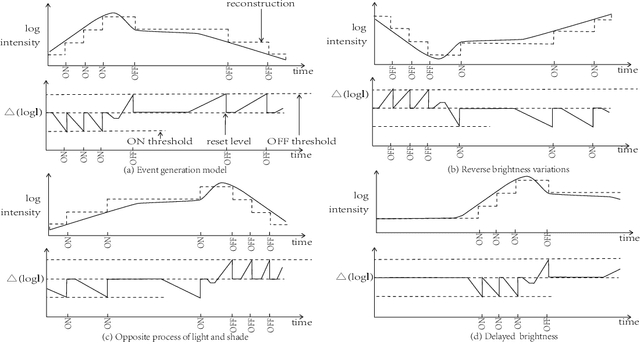

Abstract:Event camera has an enormous potential in challenging scenes for its advantages of high temporal resolution, high dynamic range, low power consumption, and no motion blur. However, event-based learning is hindered by insufficient generalization ability. In this paper, we first analyze the influence of different brightness variations on event data. Then we propose two novel augmentation methods: EventReverse and EventDrift. By reversing and drifting events to their corresponding positions in the spatiotemporal or polarity domain, the proposed methods generate samples affected by different brightness variations, which improves the robustness of event-based learning and results in a better generalization. Extensive experiments on N-CARS, N-Caltech101 and CIFAR10-DVS datasets demonstrate that our method is general and remarkably effective.
 Add to Chrome
Add to Chrome Add to Firefox
Add to Firefox Add to Edge
Add to Edge